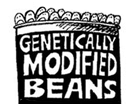An Open Letter to Governor Thomas J. Vilsack Please Be Aware You Are Making Claims About the Safety of Genetically Engineered Foods That Are Blatantly False
Steven M. Druker
Executive Director
Alliance for Bio-Integrity
www.biointegrity.org
September 4, 2002
Dear Governor Vilsack:
I am concerned, and surprised, that you continue to vigorously promote genetically engineered foods despite substantial evidence I directly presented to you showing (a) that they pose unique risks to human health, (b) that the FDA's own scientific experts have cautioned about these risks and (c) that sound science has been circumvented and the facts consistently distorted in order to get these foods on the market. Further, I am concerned that you continue to mislead the public by making false claims about the safety of genetically engineered foods and that the Governors Biotechnology Partnership, which you founded and chair, is likewise misrepresenting the facts. This is especially puzzling because the evidence I gave you provides ample basis to recognize the inaccuracy of the various misrepresentations being made by you and the Partnership.
Since I know you are essentially a good and decent man, I expect you will want to make the necessary changes as soon as possible. The following paragraphs are designed to assist by reviewing the pertinent facts.
On May 31, 2001 you held a town meeting in Fairfield at which I informed you, in the presence of the hundreds of citizens in attendance, that the U.S. Food and Drug Administration had permitted the marketing of genetically engineered (GE) foods even though its own scientists had repeatedly warned about their unique health risks.[i] In particular, I explained:
-
By bringing a lawsuit against the FDA, my organization obtained copies of its internal files on GE foods.
-
These files clearly reveal that the FDA's scientific experts conducted a comprehensive review of GE foods and overwhelmingly concluded that the process of genetic engineering is inherently hazardous and that every new food it produces entails a unique set of health risks. They warned that no GE food could be considered safe unless it has been conclusively demonstrated to be so through extensive testing that includes toxicological feeding studies using the whole food.
-
However, the FDA's politically appointed administrators - operating under a White House directive 'to foster' the biotechnology industry -covered up these warnings, professed themselves 'not aware of any information' showing that GE foods differ from others, and allowed GE foods to be marketed without any testing by claiming there is an overwhelming consensus among experts they are safe.


